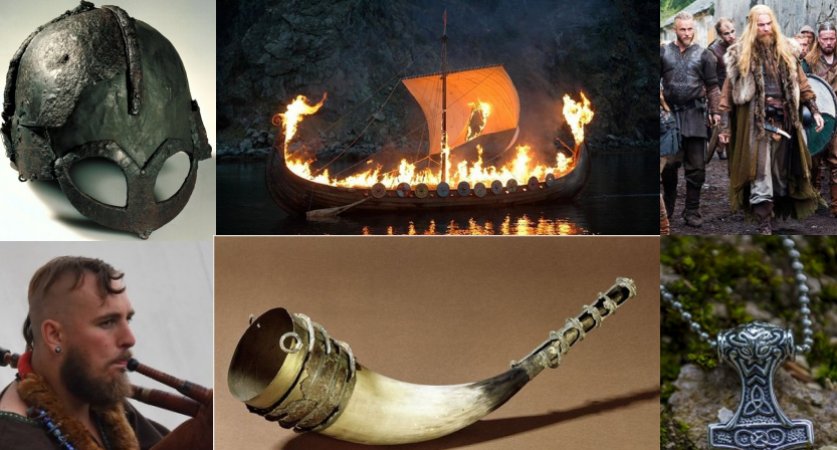10 Great Viking Misconceptions Still Being Perpetuated
Ellen Lloyd - AncientPages.com -Much has been written about the Vikings and often by people who have little knowledge about Viking history. Another reason why Vikings’ reputation has been badly damaged is because of the surviving monks and priests who wrote stories about Viking raids. The Vikings were described as savage beasts, filthy and violent killers. Some of the stories are true and based on reality, but far from all.
All this put together has resulted in that most people tend to think the Viking were huge men, with blond or red hair, covered with armor, waving double-edged axes and swords and screaming at the tops of their lungs as they rushed forward to kill, burn, pillage and loot. This is a very wrong picture and in this top list we put the records straight presenting some of greatest misconceptions about the Vikings.
1. Misconception: The Vikings Wore Helmets With Horns
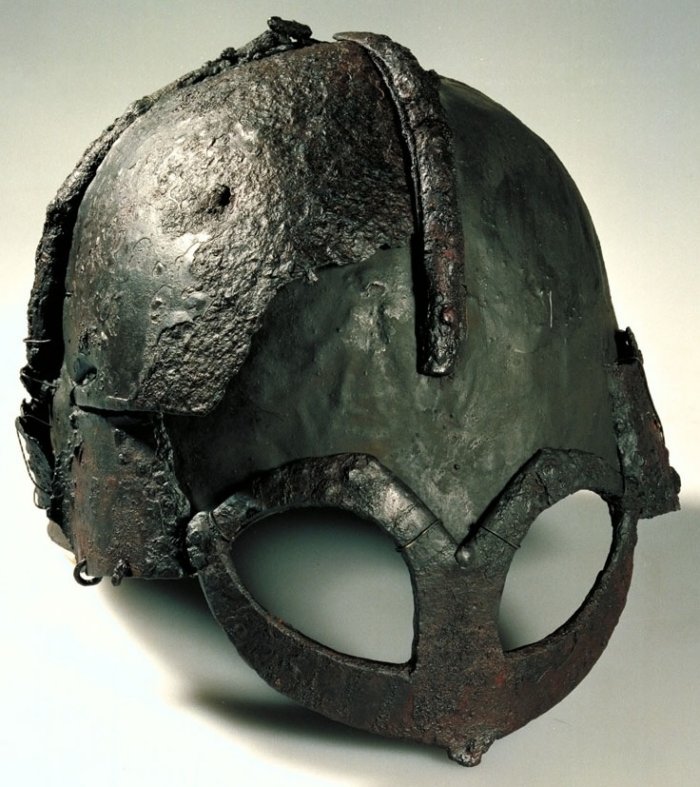 Gjermundbu helmet - Credit: NTNU Vitenskapsmuseet
Gjermundbu helmet - Credit: NTNU Vitenskapsmuseet
This is one of the biggest misconceptions about the Vikings ever. Vikings did not wear horned helmets. There is not a single depiction dating back to the Viking age showing a horned helmet Viking and no such helmet has ever been discovered. The reason why this misconception started is because Christians in contemporary Europe added the detail to make the Vikings look even more barbarian and pagan, with horns like Satan’s on their head. Another explanation to the horned Viking helmet myth probably comes from A Victorian staging of Richard Wagner's operas about Norse mythology. it should be added that scientists have only found one Viking Age helmet in Scandinavia and that is the unique Gjermundbu helmet.
2. Misconception: All Scandinavians Were Vikings
The Vikings did originate from the Scandinavian countries, but only a small portion of the populations of Scandinavia participated in raiding.
Over time Vikings created settlements in many places. They reached, reaching as far as North Africa, Russia, Constantinople, and even North America. It should also be noted that during the Viking Age, present day Denmark, Sweden, and Norway simply consisted of a number of tribes who were constantly at war with one another.
See also:
10 Viking And Norse Symbols Explained
10 Norse Gods Who Vikings Gained Strength From
Félag – Ancient Viking Company Organized Trade Finance
3. Misconception: The Vikings Were All Dirty And Wild-Looking People
 Left: credit: Public domain -Right: Jacky Pinchin
Left: credit: Public domain -Right: Jacky Pinchin
Vikings were by no means filthy. Archaeologists have found evidence on a regular basis of combs, tweezers, razors and “ear spoons” and other grooming utensils that indicate the Viking people were very keen on maintaining personal hygiene. These same excavations have also revealed that the Vikings made soap. Vikings were some of the cleanest people in all of Europe at the time. They bathed weekly in contrast to other Europeans who bathed once a year. As preciously discussed on Ancient Pages, there is solid evidence that Vikings were cleaner than most and they were rather vain.
4. Misconception: Vikings Drank From Skull Cups
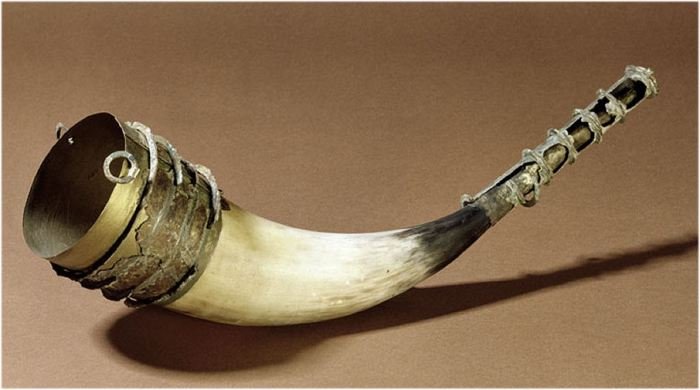 Reconstructed Iron Age Viking drinking horn. Image credit: Norway’s National Collection of Antiquities
Reconstructed Iron Age Viking drinking horn. Image credit: Norway’s National Collection of Antiquities
A skull cup is a drinking vessel that is made from a human skull, usually from those individuals whom warriors and enemies killed during a battle. No skull cup belonging to the Vikings has been unearthed. The use of skull cups by the Vikings is believed to be only a myth and non-factual. This belief basically spread because of a mistranslation of an Icelandic term. The "Runer seu Danica literatura Antiquissima" of Ole Worm mentioned a drinking session of warriors.
5. Misconception: Vikings Spent All Their Time Raiding And Warring
 Viking Hammer of Thor. Image credit: Public domain
Viking Hammer of Thor. Image credit: Public domain
In spite of their raiding reputation, most Viking men were farmers, craftsmen and traders and not warriors. Those who were warriors and returned back from a raid resumed their normal routine of farming. Many Vikings who sailed to other places, such as Iceland and Greenland, settled peacefully and were international merchants of their time. They peacefully traded with almost every county of the then-known world. By the end of the Viking Age, Viking trade reached from the far north to as far south as Jerusalem. Astonishing Norse jewelry discovered in hoards and burial sites reveal Vikings were highly skilled craftsmen. Viking jewelry was beautifully made and it's still reproduced today in modern times.
6. Misconception: Vikings Were A Unified Army
 Arrival of Rurik to Ladoga by Viktor Vasnetsov (1848-1926). Image credit: Public domain
Arrival of Rurik to Ladoga by Viktor Vasnetsov (1848-1926). Image credit: Public domain
Vikings were never a nation and unified army. Vikings were groups of warriors, explorers and merchants led by a chieftain. In the Viking society kings were the most powerful people, but having the highest social status was also associated with responsibilities and certain requirements. Not everyone could be elected as a Viking king.
7. Misconception: Vikings Were All Blond And Big
The average Viking man was about 170 cm (5’7”) tall which was not especially tall for the time. They were certainly not all natural blond, but many Vikings bleached their hair.
In Scandinavia today, men are much higher than the average Viking was, however far from all are blond.
8. Misconception: Vikings Used Crude And Primitive Weapons
 Two 10th-century sword hilts (Petersen type S) with Jelling style inlay decorations, with replicas, on display in Hedeby Viking Museum. Image credit: viciarg, Wikipedia, CC BY 2.5
Two 10th-century sword hilts (Petersen type S) with Jelling style inlay decorations, with replicas, on display in Hedeby Viking Museum. Image credit: viciarg, Wikipedia, CC BY 2.5
Most people think Vikings used crude and primitive weapons such as clubs and crude axes. This is very wrong. Vikings used expensive and sophisticated swords made of iron and these weapons were highly decorated. According to Viking Sagas, one method of testing these weapons was to place the sword hilt first in a cold stream, and float a hair down to it. If it cut the hair, it was considered a good sword. Swords were very important to Vikings.
Viking men also carried axes or spears, as well as shields for protection.
9. Misconception: Vikings Were Typically Buried In A Dolmen
Image credit: orderofthegooddeath.com
The greatest honor for a Viking was to be buried on board a boat. Great warriors and members of the aristocracy were often set to rest in their longships. Some warriors were cremated inside stone ships, or stones that had been laid on the ground in the shape of ship. Other warriors were burned on the pyre, which was a bundle of sticks that was set on fire. Viking funeral traditions involved burning ships and complex ancient rituals.
10. Misconception: Vikings Had Tresses
Image credit: Photographer unknown
As for hairstyle, to proclaim their Viking roots, Norman men shaved the back half of their head entirely, behind a line drawn from over the crown from ear to ear. On the front half of the head, forward of this line, the hair was left to grow long. There is an 11th-century letter in Old English, which mentions “Danish fashion with bared neck and blinded eyes.” So, no, there is no historical evidence of Vikings wearing tresses.
Countless misconceptions of the Vikings exist and continue to be perpetuated today, but at least now you can distinguish some facts from fiction.
Written by Ellen Lloyd – AncientPages.com
Copyright © AncientPages.com All rights reserved. This material may not be published, broadcast, rewritten or redistributed in whole or part without the express written permission of AncientPages.com
Expand for referencesKirsten Wolf - Viking Age: Everyday Life During the Extraordinary Era of the Norsemen
Family Ancestry - Viking Skull Cups
History on the Net - Viking Weapons and Armor
The Viking Answer Lady
Robert D. Smith - Medieval Weapons: An Illustrated History of Their Impact (Weapons and Warfare)
Visit Denmark - Vikings - facts and myths
The Funeral Source - Scandinavian Funeral Rites
The Viking Rune
More From Ancient Pages
-
 A 500-Year-Old Stolen Copy Of da Vinci’s “Salvator Mundi” Painting – Found By Italian Police
News | Jan 20, 2021
A 500-Year-Old Stolen Copy Of da Vinci’s “Salvator Mundi” Painting – Found By Italian Police
News | Jan 20, 2021 -
 Traces Of The Watchers In Ancient China Shed New Light On This Mysterious Lost Race
Civilizations | Aug 11, 2018
Traces Of The Watchers In Ancient China Shed New Light On This Mysterious Lost Race
Civilizations | Aug 11, 2018 -
 Hulagu Khan Destroyed Thousands Of Priceless Ancient Books Kept In The House Of Wisdom In Baghdad
Ancient History Facts | Jun 21, 2018
Hulagu Khan Destroyed Thousands Of Priceless Ancient Books Kept In The House Of Wisdom In Baghdad
Ancient History Facts | Jun 21, 2018 -
 Enigmatic Newport Tower – Built By The Vikings, Knights Templar, Freemasons Or Someone Else?
Featured Stories | Aug 1, 2024
Enigmatic Newport Tower – Built By The Vikings, Knights Templar, Freemasons Or Someone Else?
Featured Stories | Aug 1, 2024 -
 Ancient Fossils Reveal Climate Altered Humans’ Body And Brain Size
Archaeology | Jul 8, 2021
Ancient Fossils Reveal Climate Altered Humans’ Body And Brain Size
Archaeology | Jul 8, 2021 -
 Rising Sea Level Caused Vikings To Abandon Greenland – New Study
Vikings | Apr 17, 2023
Rising Sea Level Caused Vikings To Abandon Greenland – New Study
Vikings | Apr 17, 2023 -
 Remarkable Marble Fragment From The Temple Of Zeus In Akragas Found Underwater Off The Coast Of Sicily
Archaeology | Feb 6, 2024
Remarkable Marble Fragment From The Temple Of Zeus In Akragas Found Underwater Off The Coast Of Sicily
Archaeology | Feb 6, 2024 -
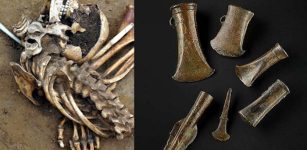 DNA Study Sheds New Light On Ancient Britain’s Language, Ancestry, Kinship, Milk
Archaeology | Dec 26, 2021
DNA Study Sheds New Light On Ancient Britain’s Language, Ancestry, Kinship, Milk
Archaeology | Dec 26, 2021 -
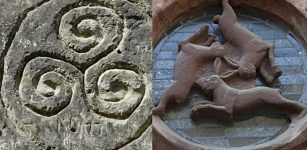 Triskelion – Millennia Old Traditional Symbol Used In Many Cultures Around The World
Ancient Symbols | Dec 13, 2018
Triskelion – Millennia Old Traditional Symbol Used In Many Cultures Around The World
Ancient Symbols | Dec 13, 2018 -
 The Apaches’ Mysterious Encounter With Unknown Beings
Featured Stories | Jun 10, 2024
The Apaches’ Mysterious Encounter With Unknown Beings
Featured Stories | Jun 10, 2024 -
 Secret Story Of The Ancient Bak’Ti Gods And Their Battle To Gain Control Over Humanity And Planet Earth – Told By Shamans
Featured Stories | Jun 23, 2018
Secret Story Of The Ancient Bak’Ti Gods And Their Battle To Gain Control Over Humanity And Planet Earth – Told By Shamans
Featured Stories | Jun 23, 2018 -
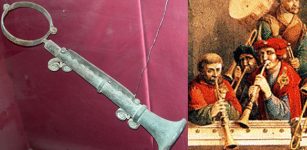 What Was The Medieval Shame Flute?
Ancient History Facts | Jan 27, 2020
What Was The Medieval Shame Flute?
Ancient History Facts | Jan 27, 2020 -
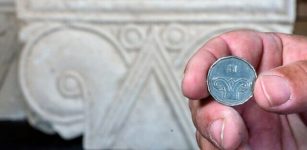 Palace From The Time Of The Kings Of Judah – Unearthed In Jerusalem
Archaeology | Sep 5, 2020
Palace From The Time Of The Kings Of Judah – Unearthed In Jerusalem
Archaeology | Sep 5, 2020 -
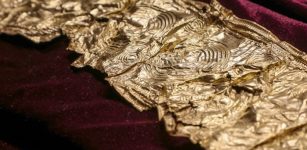 Unique Ornamented Golden Bronze Age Belt Discovered Near Opava, Czech Republic
Artifacts | Oct 28, 2022
Unique Ornamented Golden Bronze Age Belt Discovered Near Opava, Czech Republic
Artifacts | Oct 28, 2022 -
 Secrets Of An Unusual And Mysterious Medieval Danish Axe Revealed By Scientist
Archaeology | Nov 25, 2022
Secrets Of An Unusual And Mysterious Medieval Danish Axe Revealed By Scientist
Archaeology | Nov 25, 2022 -
 Mysterious Voynich Manuscript Was Written In Two Languages – Scientists Say
Archaeology | Apr 24, 2017
Mysterious Voynich Manuscript Was Written In Two Languages – Scientists Say
Archaeology | Apr 24, 2017 -
 Isaiah: Prophet Who Predicted The Coming Of Jesus Christ To Salvage Mankind From Sin
Biblical Mysteries | Apr 4, 2019
Isaiah: Prophet Who Predicted The Coming Of Jesus Christ To Salvage Mankind From Sin
Biblical Mysteries | Apr 4, 2019 -
 Hollow Bones That Let Dinosaurs Become Giants Evolved At Least Three Times Independently
News | Apr 11, 2023
Hollow Bones That Let Dinosaurs Become Giants Evolved At Least Three Times Independently
News | Apr 11, 2023 -
 Archaeological Enigma On The Træna Islands – What Happened To The Local Community?
Archaeology | Nov 28, 2023
Archaeological Enigma On The Træna Islands – What Happened To The Local Community?
Archaeology | Nov 28, 2023 -
 Can Diseases Explain Why Neanderthals Suddenly Disappeared About 40,000 Years Ago?
Archaeology | Nov 9, 2019
Can Diseases Explain Why Neanderthals Suddenly Disappeared About 40,000 Years Ago?
Archaeology | Nov 9, 2019

